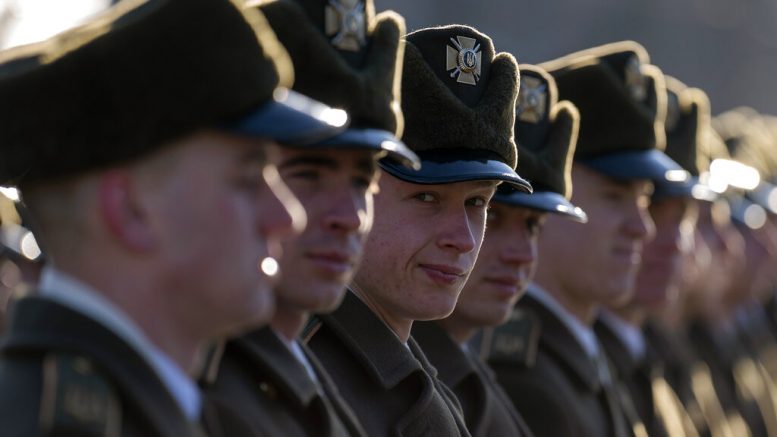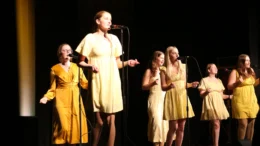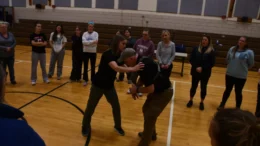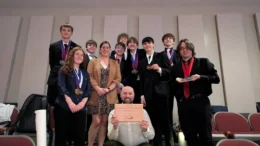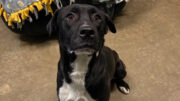MOSCOW (AP) — Russia said Tuesday that some units participating in military exercises were returning to their bases, adding to glimmers of hope that the Kremlin may not be planning to invade Ukraine imminently. But it gave no details on where the troops were pulling back from, or how many.
That muddied efforts to determine the significance of the announcement, which buoyed world financial markets and the long-suffering ruble after weeks of escalation in Europe’s worst East-West standoff in decades. It came a day after Russia’s foreign minister indicated the country was ready to keep talking about the security grievances that led to the Ukraine crisis — a gesture that changed the tenor after weeks of tensions.
Yet hours before the Russian Defense Ministry statement about the troops, a U.S. defense official said Russian units were moving closer to the Ukrainian border – not away from it. And Western officials continued to warn that the Russian military could attack at any time, with some floating Wednesday as a possible invasion day. NATO’s chief said the alliance had no proof yet of a Russian retreat.
The fears of an invasion grew from the fact that Russia has massed more than 130,000 troops near Ukraine. Russia denies it has any such plans, despite placing troops on Ukraine’s borders to the north, south, and east and launching massive military drills nearby. U.S. and other NATO allies, meanwhile, have moved troops and military supplies toward Ukraine’s western flank, although not to confront Russian forces, and promised more financial aid to the ex-Soviet nation.
Moscow brandished Tuesday’s pullback announcement as proof that fears of war were fabricated by a hostile, U.S.-led West: “February 15, 2022, will go down in history as the day Western war propaganda failed. Humiliated and destroyed without a single shot fired,” Russian Foreign Ministry spokesperson Maria Zakharova tweeted.
Yet Ukraine remains effectively surrounded on three sides by military forces from its much more powerful neighbor, and even if the immediate threat recedes, longer-term risk remains. Russia annexed the Black Sea peninsula of Crimea from Ukraine in 2014, and some 14,000 people have been killed in fighting between Ukrainian troops and pro-Russia separatists in the country’s east.
The Russian Defense Ministry did not indicate where the withdrawing troops had been deployed or how many were leaving.
It released images of tanks and armored vehicles rolling onto a train, and a tank commander saluting his forces while a military band played. The ministry did not disclose where or when the images were taken, or where the military vehicles were headed, other than “to places of permanent deployment.”
Foreign Minister Sergey Lavrov said the troops were returning “according to plan.” He said such drills always adhered to a schedule — regardless of “who thinks what and who gets hysterical about it, who is deploying real informational terrorism.”
Ukraine’s leaders expressed skepticism.
“We won’t believe when we hear, we’ll believe when we see. When we see troops pulling out, we’ll believe in de-escalation,” Ukrainian Foreign Minister Dmytro Kuleba said.
Speaking in Brussels, NATO Secretary-General Jens Stoltenberg said: “So far, we have not seen any de-escalation on the ground, not seen any signs of reduced Russian military presence on the borders of Ukraine.”
However, he added that there are “some grounds for cautious optimism” for diplomatic efforts, given the signals coming from Moscow in recent days.
Stoltenberg said Russia has in the past moved into areas with troops and equipment, then pulled back leaving military materiel in place for rapid use later. He said that NATO wants to see a “significant and enduring withdrawal of forces, troops, and not least the heavy equipment.”
European leaders have been scrambling to try to head off a new war on their continent, after several tense weeks that have left Europeans feeling caught between Russia and the U.S., and further pushed up household energy prices because of Europe’s dependence on Russian gas.
German Chancellor Olaf Scholz met Tuesday with Russian President Vladimir Putin in Moscow, a day after sitting down with Ukraine’s leader in Kyiv. In his opening remarks in the Kremlin, Scholz addressed the Ukraine tensions but also noted Germany’s economic ties with Russia — which complicate Western efforts to agree on how to punish Russia in case of an invasion.
Foreign Minister Zbigniew Rau of Poland, one of Russia’s most strident European critics, met in Moscow with Lavrov, and they discussed ways to use the Organization for Security and Cooperation in Europe for more talks aimed at easing tensions around Ukraine.
The day before, Lavrov suggested more efforts at diplomacy in a made-for-TV meeting with Putin that seemed designed to send a message to the world about the Russian leader’s position. The foreign minister argued that Moscow should hold more talks, despite the West’s refusal to consider Russia’s main demands.
Moscow wants guarantees that NATO will not allow Ukraine and other former Soviet countries to join as members. It also wants the alliance to halt weapons deployments to Ukraine and roll back its forces from Eastern Europe.
The U.S. reacted coolly.
“The path for diplomacy remains available if Russia chooses to engage constructively,” White House principal deputy press secretary Karine Jean-Pierre said. “However, we are clear-eyed about the prospects of that, given the steps Russia is taking on the ground in plain sight.”
British Foreign Secretary Liz Truss reiterated that the danger of an invasion still exists, telling Sky News that it “could be imminent.” Norwegian Foreign Minister Anniken Huitfeldt issued a similar warning, and Estonia’s foreign intelligence agency said the Russian armed forces could launch an operation “from the second half of February.”
A U.S. defense official said small numbers of Russian ground units have been moving out of larger assembly areas for several days, taking up positions closer to the Ukrainian border at what would be departure points if Putin launched an invasion.
The official spoke on condition of anonymity to discuss information not publicly released.
Maxar Technologies, a commercial satellite imagery company that has been monitoring the Russian buildup, reported increased Russian military activity in Belarus, Crimea, and western Russia, including the arrival of helicopters, ground-attack aircraft, and fighter-bomber jets at forward locations. The photos taken over a 48-hour period also show ground forces leaving their garrisons and combat units moving into convoy formation.
Meanwhile, Russian lawmakers urged Putin to recognize rebel-held areas in eastern Ukraine as independent states. The State Duma, Russia’s lower house, voted to submit an appeal to Putin to that effect.
Kremlin spokesman Dmitry Peskov said the issue of recognizing the self-proclaimed republics is “very, very relevant to the public.” But it was unclear how Putin would respond or how this could influence Russia’s actions in Ukraine.
While the U.S. warns that Russia could invade Ukraine any day and Kyiv alerted residents to find their nearest bomb shelters, the drumbeat of war was hardly heard in Russia itself.
The Kremlin has cast the U.S. warnings of an imminent attack as “hysteria” and “absurdity,” and many Russians believe Washington is deliberately stoking panic and fomenting tensions to trigger a conflict for domestic reasons.
Few Russians expect a war.
In Russia’s Belgorod region about 18 miles from Ukraine’s border, residents carry on with life as usual, even as more military personnel have been passing through village streets.
“Planes, helicopters just started flying, I guess, to patrol the border,” said Vladimir Konovalenko.
Villager Lyudmila Nechvolod says she’s not worried.
“We are friends with Ukraine. And we are not sure that Ukraine wants war with us. … We are really on the border, we really have relatives here and there, everyone has somebody there (on the Ukrainian side),” she said. “No one wants war.”

